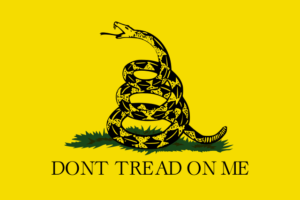 It’s hard to write a Fourth of July column when you don’t feel much like celebrating.
It’s hard to write a Fourth of July column when you don’t feel much like celebrating.
To prepare for this one, I perused every Independence Day column I’ve written since I became a regular for this newspaper back in the late 1990s. Though more than ten years’ worth of those columns are posted on my website (www.jennieivey.com), they and all the rest are also stored chronologically in massive three-ring binders, each column neatly clipped and scotch-taped to a piece of copy paper slipped inside a vinyl sheet protector.
In reading through them, I discovered a lot of columns about how dogs and fireworks don’t mix. I’ve written about braving the giant “Slide the City” water slide in downtown Cookeville. I’ve written about hot dog eating contests. I’ve written about watching my grandkids hold sparklers for the first time and about Independence Hall and the Liberty Bell and Paul Revere and Betsy Ross and Ben Franklin and Samuel Adams and even Benedict Arnold.
This year, I’m writing about a flag.
Not the stars-and-stripes, as you might expect in a Fourth of July column. Nope. This column is, instead, about the “Gadsden flag,” sometimes called the “Don’t Tread on Me” flag, which flew during the early days of the American Revolution. Named after its creator Christopher Gadsden, a Charleston-born brigadier general in the Continental Army, the flag made its first appearance in 1775.
It’s mustard-yellow in color and pictures a rattlesnake coiled on a patch of grass, ready to strike. Beneath the snake are the words DONT TREAD ON ME (apostrophe omitted for historical accuracy). Some historians believe the flag was inspired by Ben Franklin’s famous “Join or Die” drawing, which depicts a rattlesnake sliced into several segments representing the American colonies, published in 1754 to encourage American colonists to unite to oppose British tyranny. After the stars-and-stripes flag was adopted, the Gadsden flag was largely ignored for more than 200 years.
It regained some popularity in the 1970s in libertarian circles but attracted little attention beyond that. The flag and its slogan came roaring back as the far-right Tea Party movement gained momentum in the first decade of the twenty-first century. These days, it’s everywhere. Its fans proclaim it a symbol of patriotism, a protest against government overreach and a beacon for those fighting to protect their rights–most notably, the right to bear arms.
The flags are available for purchase in countless places, as are commemorative coins, t-shirts, ball caps, cell phone covers and other items too many to enumerate. Some states, including ours, even offer the Gadsden flag design on vehicle license tags.
Until the last few days, when the conservative super-majority on the U.S. Supreme Court handed down decisions so reactionary that I can’t yet fully wrap my head around them, I had no interest in owning anything connected to the Gadsden flag. But now I do. I want to scream its sentiments from the rooftops. And if anybody asks why, here’s what I have to say to the courts and to Congress and to governors and legislators in dozens of states, including this one.
How dare you try to control what people read? How dare you allow faculty members to proselytize in public schools? How dare you pretend that assault weapons that pulverize shooting victims so completely that their corpses are unidentifiable are protected by the second amendment? How dare you tell me or any other woman what we can or can’t do with our own bodies?
When you do these things, you’re treading on the American people. Stomping our liberty under your heel.
I won’t wear red, white and blue this coming Fourth of July. I’ll be wearing black instead. Or, if I can get one shipped to me in time, a mustard-yellow t-shirt with a rattlesnake coiled on a patch of grass, ready to strike.
(July 2, 2022)